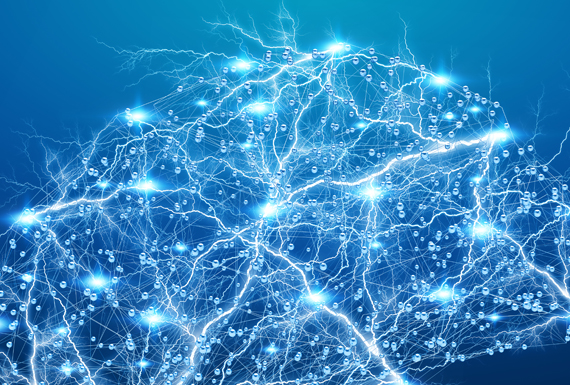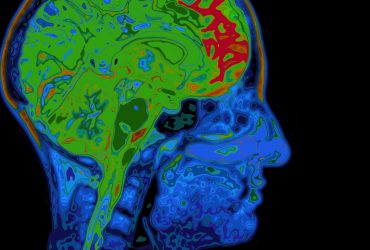
Low temperatures yield high rewards for scientists
Quantum research in Sub-milliKelvin. Finnish Low Temperature Laboratory uses cryostats to boost our understanding of nature Low-temperature research is helping scientists understand nature in better ways. At Aalto University in Espoo, researchers at a cutting-edge laboratory are conducting experiments at temperatures near absolute zero to push the limits of physics beyond its current boundaries. Their findings could lead to new developments within brain research, nanotechnology and quantum computing.
The Low Temperature Laboratory (LTL) at Aalto University is home to some of the world’s most advanced cryostats, which allow physicists to study phenomena that otherwise cannot be observed. Using liquid helium supplied by AGA, LTL has developed cryostats capable of reaching temperatures lower than -273 degrees Celsius. At such extreme conditions, matter starts exhibiting unusual properties such as superconductivity and superfluidity, which makes it possible to control the behaviour of electrons in materials such as aluminium.
Quantum mechanics determins
“At low temperatures, general physics change because you work in so-called quantum limits where you can forget about thermal fluctuations, and everything is determined by quantum mechanics. This gives us a unique opportunity to investigate different phenomena and extend our knowledge about nature. Moreover, such conditions can allow us to develop different ultrasensitive sensors and devices for everyday practical applications in the technological, astrophysical and medical fields,” says Alexander Savin, a staff scientist at the lab.
Liquid helium – a superfluid
LTL was founded in 1965 and has been developing unique cooling techniques since the 1970s. Since then, the lab has set several world records for reaching low temperatures, including in 2000 when its demagnetization cryostat was able to cool down a sample to just 0.0000000001 degrees above absolute zero. Science defines absolute zero as -273.15 Celsius, a temperature that can never be reached. But researchers want to get as close as they can to study what happens to the different solids, quantum crystals and liquids at such low temperatures. Liquid helium is used at the first stage of cooling and can produce temperatures down to approximately 1 Kelvin (the Kelvin scale starts at absolute zero). So-called dilution refrigerators then use the two different Helium isotopes, Helium 3 and Helium 4 to cool samples even further. Helium is crucial to low temperature experiments as it becomes liquid at −269 degrees Celsius and can enter a superfluid state at even lower temperatures. Superfluids have zero viscosity, meaning they move around objects with no friction or loss of energy.
Sub-milliKelvin tests
In 2015, the lab used nearly 26,000 liters of liquid Helium from AGA for its experiments. LTL also uses liquid nitrogen as a cryoliquid while other gases, such as hydrogen and methane, are used in some processes as well.
Using these kinds of cooling devices is a painstaking process. The cooldown time for small liquid helium refrigerators developed in the lab is eight hours. For a dry dilution refrigerator it can be up to 26 hours. Some sub-milliKelvin experiments can take several weeks to prepare, says Alexander Savin. “Low temperature research is a very difficult and time consuming process. The experiments themselves often take longer as well because we are dealing with very weak signals and very high sensitivity to any external disturbances, like vibrations or electromagnetic noise. To protect an experiment from external factors we install our cryostats on a special vibration isolation platform in a room that is radio frequency shielded,” says Alexander Savin.
New applications
While this type of research mostly deals with fundamental physics, some of the findings are already being used for real-life applications. One of the main areas for such applications involves superconductivity, when a material loses all electrical resistance and magnetic fields at very low temperatures. Superconducting materials can be used to create ultrasensitive radiation detectors and magnetometers, which are used in different fields including brain imaging. Aalto University now has a separate department dedicated to brain research that uses so called SQUIDs (Superconducting quantum interference devices), which are operated with the help of low-temperature technology. “If you want to detect some signals very accurately also at room temperature you can use SQUIDs which you cool down, and you can then detect very small currents. One example is that you can detect currents in the human brain and even create 3D images of the currents that happen in the brain. So if a person has some form of illness, you can detect which part of the brain is responsible for the problem,” says Alexander Savin.
Quantum engineering a future reality
Another major focus area for LTL is nanotechnology, where scientists are trying to find ways of making quantum engineering a reality. Quantum devices also need to be cooled to near absolute zero in order to be successfully manipulated, which is one reason why they will not be seen in normal retail stores anytime soon. “These projects are not one-day projects. When it comes to general applications of quantum engineering, let’s say quantum computing, I think they are 10 to 20 years away in the best case,” says Alexander Savin.
Text: Mattias Karén
Photo: Shutterstock


